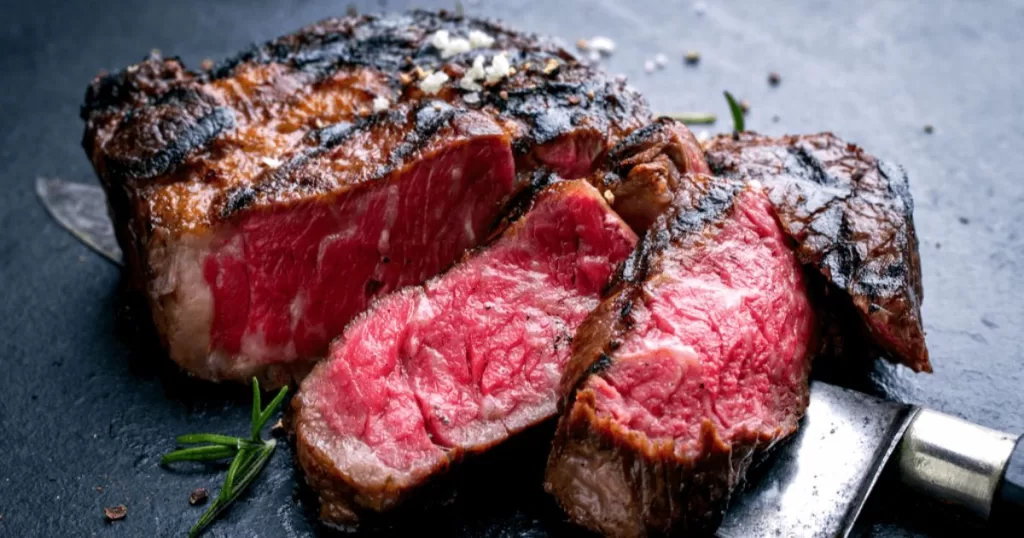The Legendary Kobe Beef: Why Is It So Famous and Expensive?
Kobe beef enjoys worldwide fame as one of the most desirable and expensive types of beef in the world. But why exactly has this Japanese delicacy become so coveted?
The Origins

The story begins in 1868 when Kobe first opened its port to foreign trade. Legend has it that an English sailor had a craving for steak, but beef was not commonly eaten in Japan at the time. After much effort, he convinced local farmers to slaughter some of their work cattle and found the meat incredibly tasty. As more foreign ships came into port, sailors began asking for what came to be known as “Kobe beef.”
However, there is no actual cattle breed called Kobe beef. The cattle that produces this beef is called “wagyu,” which simply means “Japanese cattle.” Most wagyu in Japan come from a black strain called Kuroge. Of these, the Tajima strain of Kuroge cattle raised in Hyogo Prefecture must meet strict criteria to qualify as Kobe beef.

Fun Fact: Did you know that Kobe Bryant was named after the famous Kobe beef from Japan? His parents picked the name after seeing the dish on a restaurant menu. However, they made a slight change to the pronunciation. Bryant’s name is pronounced “ko-bee” whereas the meat is pronounced “ko-bay”.
The Kobe Beef Difference
To be certified as Kobe beef, the cattle must:
- Be born, raised, and slaughtered in Hyogo Prefecture
- Be at least 28 months old at time of slaughter
- Be a castrated male or virgin female
- Weigh less than 500 kg at slaughter
- Achieve a yield grade of A or B and meat quality score of 4+
- Have a beef marbling score of at least 6
The cattle are raised at small farms in a stress-free environment. At the farms, the cattle are fed a diet containing sake leftovers to enhance flavor. The farmers pamper the animals to keep them calm and happy. Once fully grown, the cattle are sent to market for auction.
Grading the Beef

At the market, experienced inspectors carefully examine each carcass to assign quality grades using the following criteria:
Yield Grade (Amount of Meat Harvested):
- A: Highest Yield
- C: Lowest Yield
Meat Quality Grade (Degree of Marbling, Firmness, Color):
- 5: Highest Quality
- 1: Lowest Quality
Beef Marbling Score (Degree of Intramuscular Fat):
- 12: Highest Degree of Marbling
- 1: Least Marbling
An “A5” grade signifies the best yield and quality possible. The best possible Kobe beef grade would be A5 with a Beef Marbling Score of 12. At a recent auction, this premium grade sold for an average price of 4,700 JPY per kg (approx. $35/kg or $16/lb).
The Luxurious Dining Experience

So what makes this beef worth upwards of $500 per pound in some restaurants? Connoisseurs and expert chefs argue the answer lies in the unparalleled eating experience Kobe beef offers.
The ultra-heavy marbling makes Kobe beef incredibly tender and infuses it with immense flavor. When cooked properly at high temperatures, the fat perfectly melts to coat the inside of your mouth on each bite. The beef simply melts in your mouth like butter delivering an almost sweet, buttery flavor unlike any other steak.
Top chefs recommend searing Kobe beef steaks lightly on both sides then cooking to medium rare to medium doneness to fully render the fat for maximum tenderness and flavor delivery. Popular cooking methods include teppanyaki-style where the meat is expertly prepared on a hot iron grill at your table and shabu shabu hot pot style where thin slices are briefly cooked tableside in broth.
So is the astronomical price tag of Kobe beef justified? For hardcore foodies and beef connoisseurs, biting into a perfect cut of nicely marbled Kobe is like a slice of Wagyu heaven and perhaps justifies splurging every once in a while. But for the average diner, while Kobe beef undeniably delivers a uniquely sublime eating experience, the price may simply be too steep when comparable quality steaks can be found for under $50 per pound.